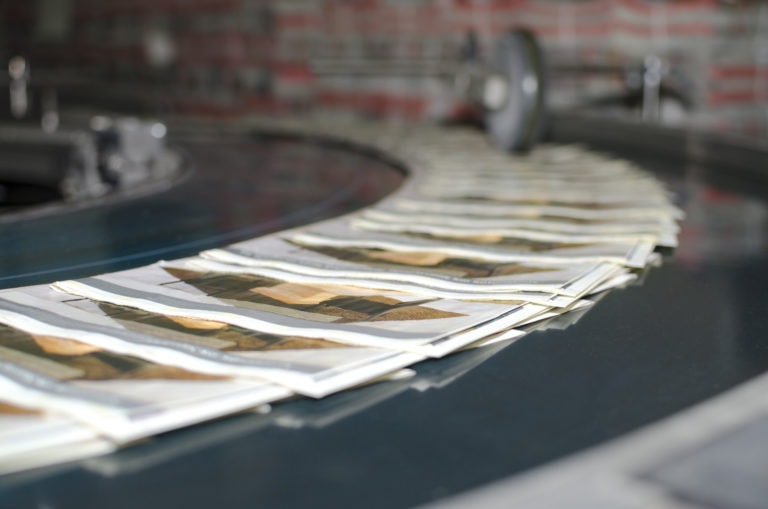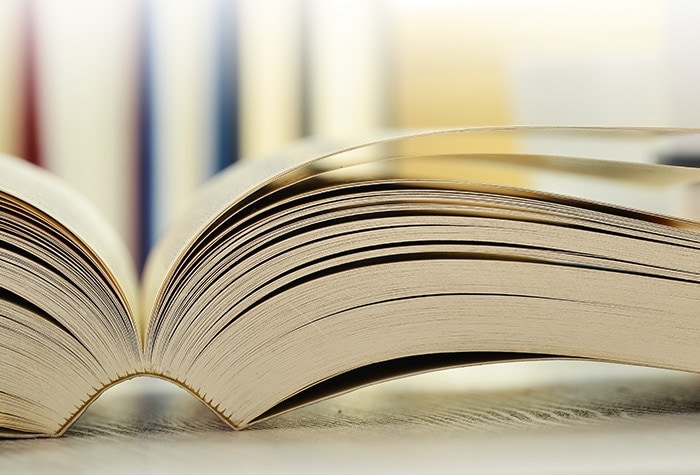The book binding process relies heavily on graphic arts adhesive solutions to produce quality bound books. Without good adhesion, individual pages or larger sections of pages may detach from the binding. These quality issues can be detrimental to a printer or publisher brand.

While most binding operations rely on adhesives, there are multiple types of binding methods to choose from. The most common adhesive-related binding methods include:
Perfect binding is one of the most common methods for binding books, though the term “perfect” actually refers to the cut of the pages rather than the binding. Perfect bound books—more commonly known as softcover books or paperback books—are bound via thermal glue. This strong, flexible glue holds the pages and the cover of a book together. In order to achieve the smooth edges that consumers expect when they purchase a book, the three non-bound sides of the book are trimmed after binding.
Usually, perfect bound books feature card-stock covers that are laminated or otherwise coated for protection. Perfect bound books offer a quality visual appeal while providing an affordable method for binding.
PUR binding is a form of perfect binding. The primary factor that differentiating PUR binding from other perfect binding processes lies in the adhesive. PUR binding uses a polyurethane reactive (PUR) adhesive. This adhesive is more powerful than the standard thermal adhesives used in general perfect binding and renders books more durable. PUR bound books are flexible and exceptionally resistant to page pull out.
Layflat binding is another variation on perfect binding. As the name suggests, this method creates finished books that can be laid flat while they are open. The square bindings associated with perfect bound books don’t provide this degree of flexibility. Layflat bound book covers are only glued to the sides of their spines. Layflat binding allows a book’s spine to float above its cover while opened.
This method is ideal for journals and notebooks that are meant to be written in, as well as textbooks or other reference books that may need to lie open for frequent consultations.
Case bound books are more commonly known as hardcover books. The process of binding these books is different from those used to bind paperbacks. First, a book’s pages must be arranged into signatures. The pages are then stitched or sewn together in the proper order. Glued-on endpapers attach these pages to the book’s cover. Covers may be made of vinyl, cloth, leather over cardboard, or other materials.
Adhesive products play a crucial role in the book binding process. Beyond traditional binding, adhesives are also central to a process known as tipping. Tipped-in pages and illustrated plates—sometimes called paste-ins—get printed separately from a book’s main text. The tipped-in pages are then glued to bound pages in order to attach them to the books.
Retail and point-of-purchase displays for books also require high-quality adhesive products. Pre-adhered tape constructions are central to bonding processes that hold displays like these together. High-quality adhesive products allow merchandising experts to forego fasteners, which helps save time and money.
BC Adhesives offers a variety of quality adhesives for use in book binding, retail, and other publishing-related applications. For more information about our products or capabilities, please contact us.
